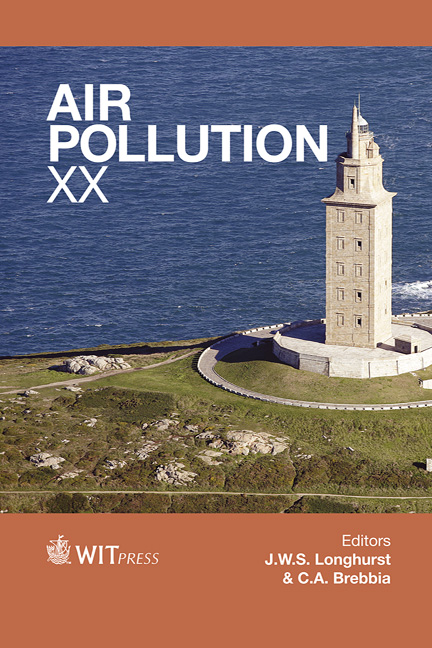Evaluation Of Outdoor And Indoor Dust Deposition As Environmental Pollution In Erbil Province
Price
Free (open access)
Transaction
Volume
157
Pages
13
Page Range
351 - 363
Published
2012
Size
376 kb
Paper DOI
10.2495/AIR120311
Copyright
WIT Press
Author(s)
F. H. Aziz & J. J. Al-Dabagh
Abstract
Since particulates are a sort of air pollution and seriously impact on environmental conditions, a considerable amount of programs to assess and control air pollution are regarded, since there are only a few studies on dust deposition in Iraq and since there have been drought conditions in last few years. In the Iraqi Kurdistan region, an experiment on dust accumulation as indoor and outdoor air pollution was undertaken in Erbil City and surrounding areas from November 2008 to April, 2009. The amount of deposited dry dust in the deferent studied location and surrounding area was between 9.1 and 48.3 gm.m2. per 2 months. The results revealed that the concentration of some chemical characteristics like total acidity, total alkalinity and sulphate ranged between 7– 33, 50–88 and 15–180 mg/l respectively. Also determining elements in accumulated dry dust such as nitrogen, phosphorus, potassium and sodium ranged from 20.3–95.3, 6.3–2.06, 8.02–66.7 and 0.9–43.6 mg/l respectively. However, heavy metals including Zn+2, Fe+3, Cr+3, CU+2 and Pb+2 were at a range of 0.54–3.8, 15.4–67.3, 0.04–1.22, 0.025–0.47 and 0.21–2.17 mg/l respectively. Radiation levels ranged from 0.02 to 0.08 msv/h (mile sever/hour). Finally, the values of studied parameters – indoor and outdoor – of decomposed dust composition were not more than limited values or levels of most other countries. Keywords: Erbil City, atmosphere, dust deposition, chemicals, trace and heavy metals, radiation.
Keywords
Erbil City, atmosphere, dust deposition, chemicals, trace and heavy metals, radiation.





